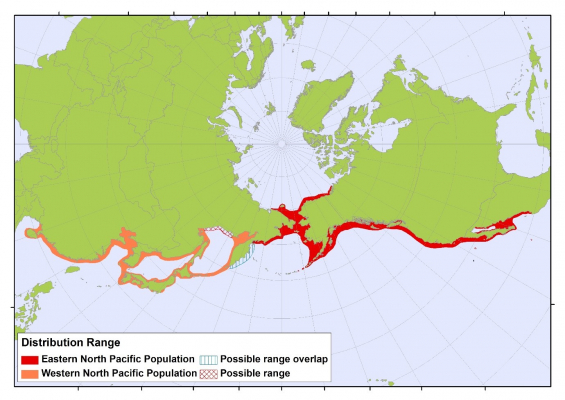North Pacific Gray Whale - range-wide review
On 8 April, international experts will come together to begin a range-wide review of the population structure and status of North Pacific gray whales. The review is prompted by surprising new information obtained from satellite tagging undertaken under the auspices of the IWC, and from genetic ‘fingerprinting’ and photo-identification studies. This new information has revealed movements of animals across the North Pacific, between populations previously thought to be separate.
Gray whales were heavily depleted by pre-twentieth century whaling which left the species extinct in the Atlantic. North Pacific populations fared better but the picture is still mixed. Today the eastern North Pacific population has recovered to its pre-exploitation number of some 20,000, but the ‘population’ in the west, off the coast of Russia, Japan and Korea, may number less than 130 animals and is critically endangered.
Establishing comprehensive information on whale population structure is never easy, but until recently, available evidence suggested that the eastern and western gray whale populations remained separate, with long but distinct coastal migration routes between their breeding grounds in the south and feeding grounds in the north.
This new information has potentially significant implications for conservation and management advice, prompting the IWC to endorse a new rangewide review. In April, the work will begin with an initial workshop in La Jolla, California. This aims to review all available information and develop a modelling framework which will enable scientists to better assess the status of gray whales and the potential impact of human activities.
For more information on the workshop, click here.

